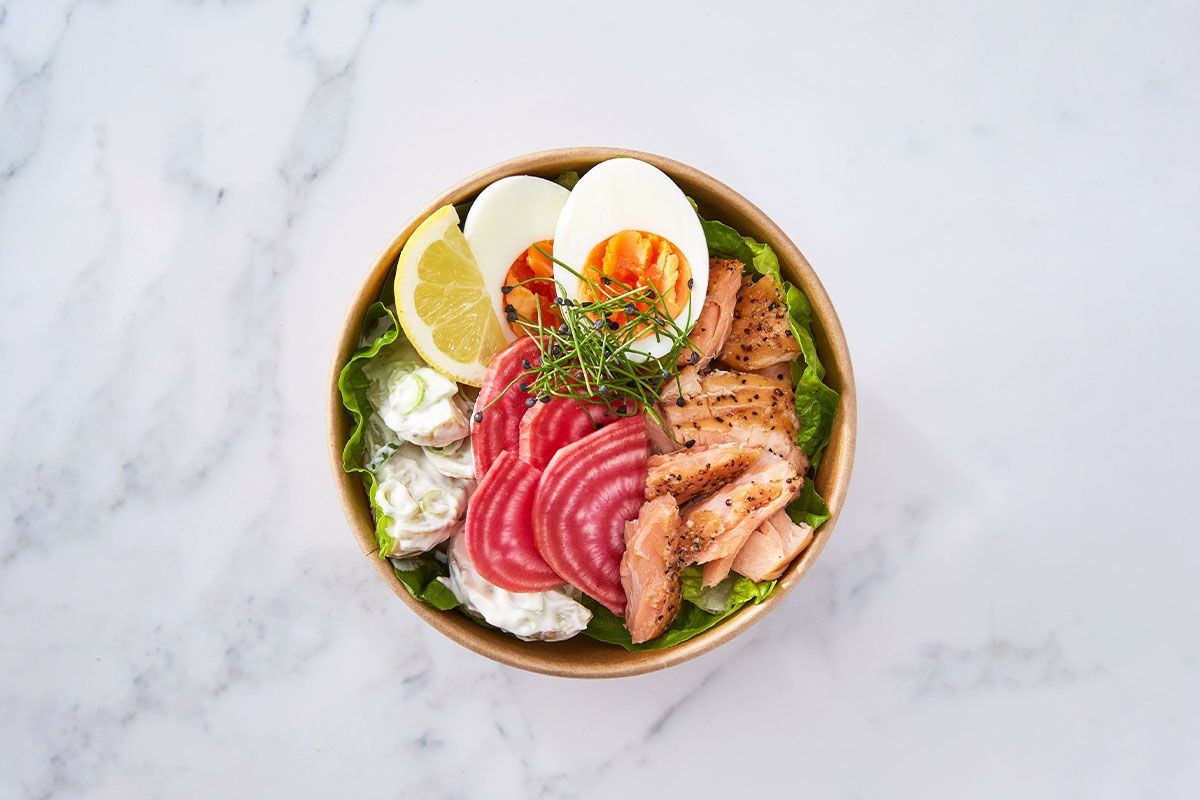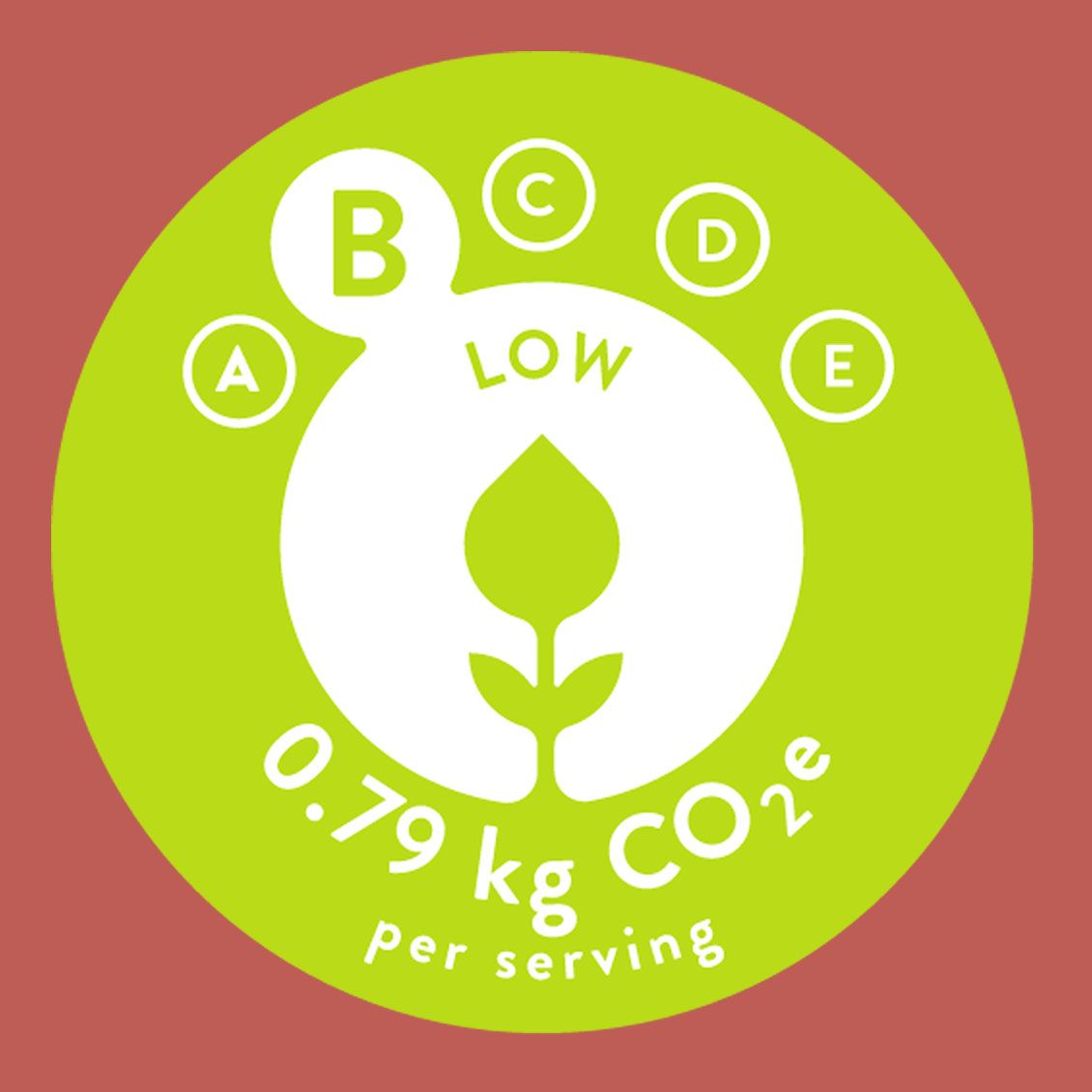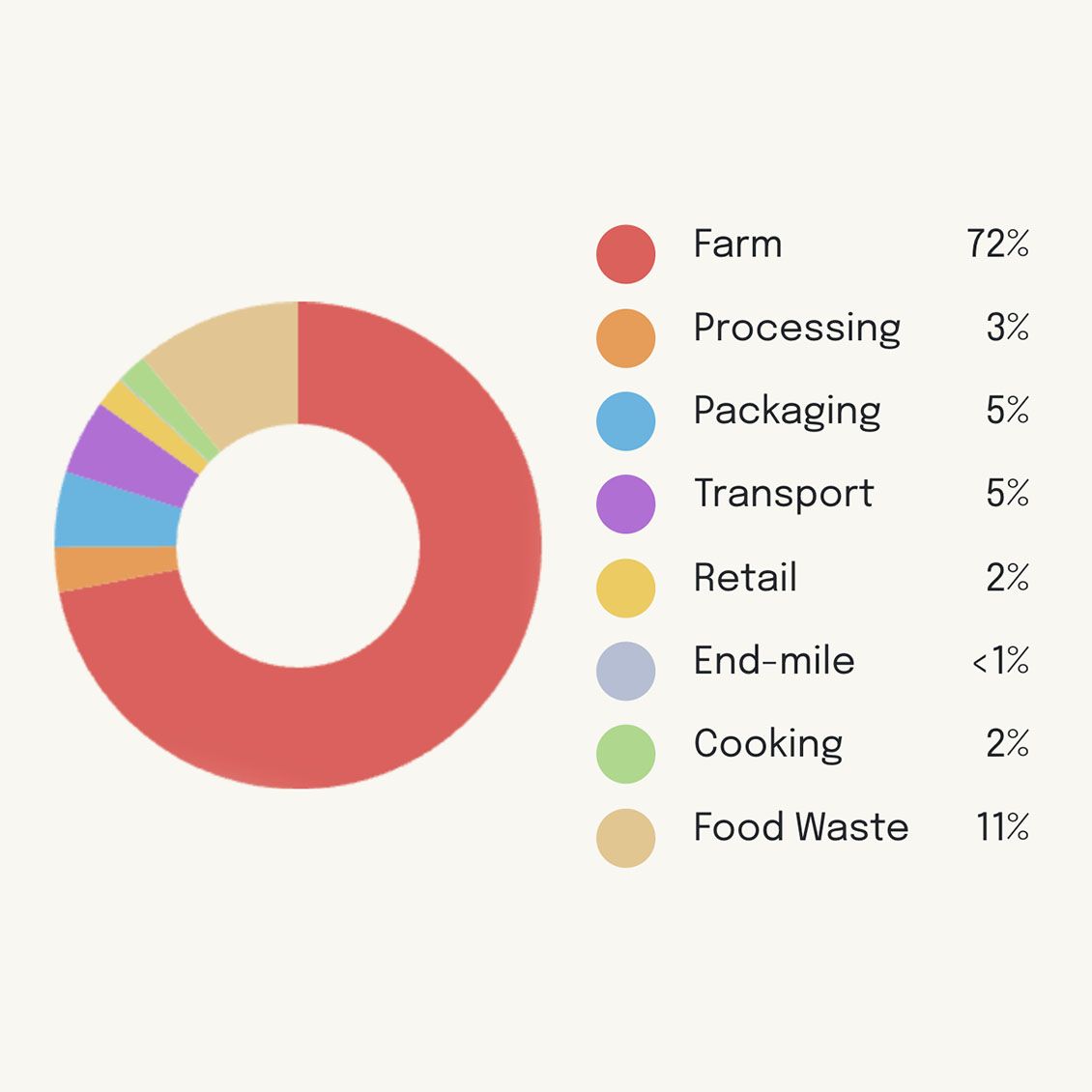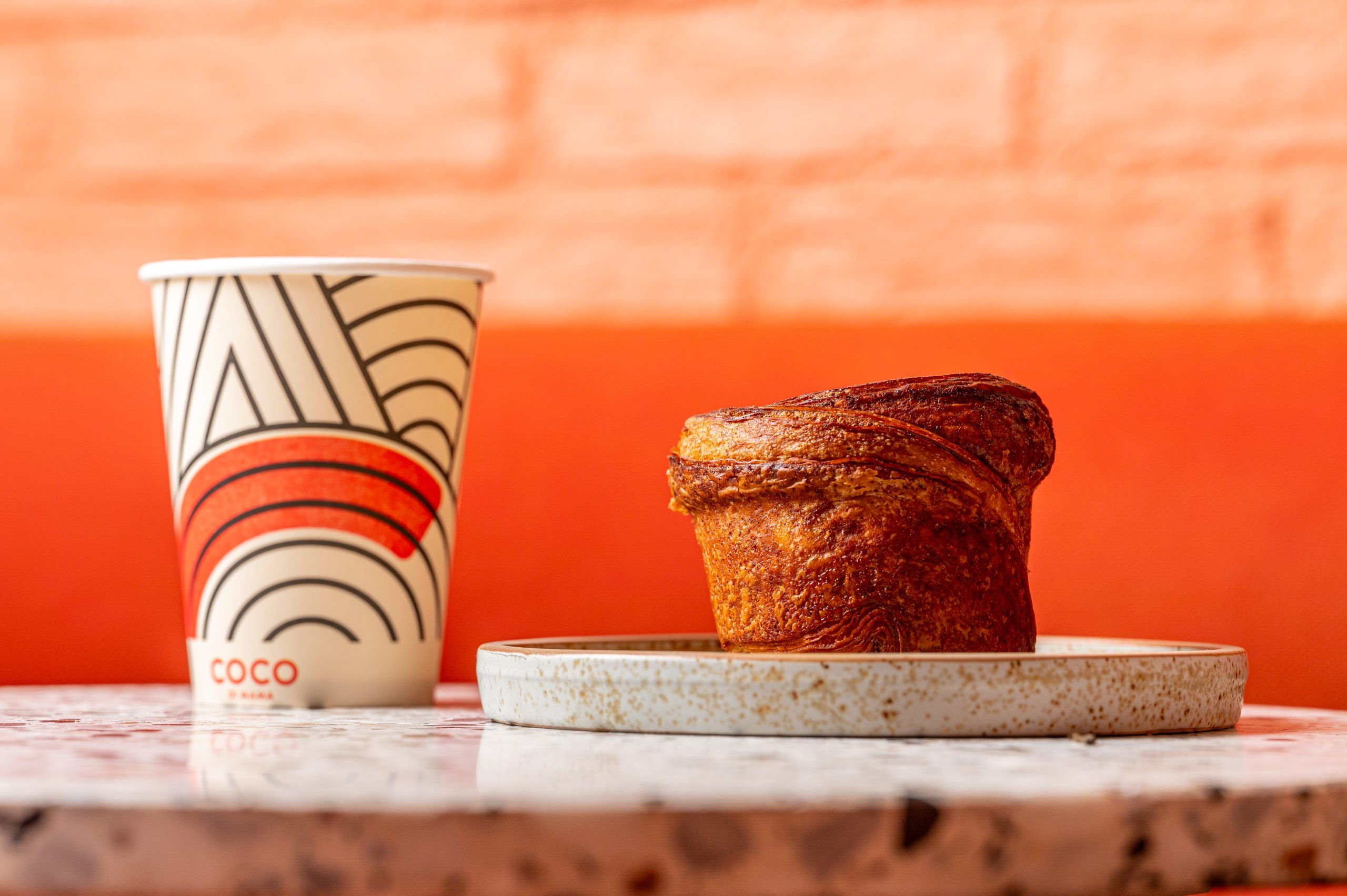SASSY SALMON
The Sassy Salmon Fit Bowl is all about balance – not just in terms of getting your nutrients for the day, but your carbon footprint too. Keep reading to find out more about how we calculate the carbon footprint of our meals and why 60% of our menu is low or very low in carbon.
LOW CARBON
This salad recipe is LOW carbon with 0.79 kg CO2.
This meal comes out as a B or “Low” rating in terms of carbon which is just one above the lowest possible score, despite salmon being a higher carbon impact ingredient.
The labels display the carbon footprint per serving of each food item, measured in kilograms of CO2-equivalent (kg CO2e). CO2-equivalent. The labels separate food items by five impact ratings – ranging from A to E – indicating a footprint score from ‘Very Low’ to ‘Very High’. Each of the ratings correlates to a traffic light colour, helping to guide users towards more sustainable food choices. The level of impact is assigned based on the carbon intensity (carbon footprint per kilogram) of the food item.
Life-cycle Assessment (LCA) Data
72% of the carbon footprint in this dish comes from the farming / sourcing of the ingredients.
The carbon footprint of food items is calculated from cradle-to-grave, so starting from the emissions of production of all inputs to the farm, and going right through to the emissions from disposal of any waste at the end of the life-cycle.
Foodsteps uses leading Life-cycle Assessment (LCA) data to account for the impacts at each stage of a food’s life cycle including farming, packaging, processing, transport, retail, cooking and waste. The LCA values are largely based on a meta-analysis by Poore and Nemecek (2018) as well as subsequent research.
The carbon footprint of food items is calculated to reflect average British consumption, using international trade data to map where food in the UK is typically sourced from over a year.
ALL ABOUT THE BALANCE
For a bit more insight, approximately 60% of the salmon we eat is farmed. Producing feed for salmon such as soya beans and other smaller fish, as well as electricity generation and fuel combustion on farms, are all big contributors to the carbon footprint of salmon. Poor waste management in salmon farms can also be very polluting, as unfiltered waste escapes into surrounding waters and threatens the neighbouring ecosystems.
So, balancing a delicious bit of roast salmon with low carbon foods such as lettuce, beetroots and potatoes can lead to an overall more climate-smart meal. You can use this principle at home too – opt for a smaller portion of the animal protein with plenty of low carbon vegetables.
We’ve answered some commonly asked questions about carbon footprinting and the carbon labels below.
What is kg CO2e?
Carbon footprint refers to the greenhouse gas emissions emitted during a product’s life cycle, and is measured in kilograms of carbon dioxide equivalents (kg CO2e).
Carbon dioxide equivalent (kg CO2e) means that other greenhouse gas emissions, such as methane (CH4) and Nitrous Oxides (NOx) have been converted into CO2e by comparing the relative global warmin




